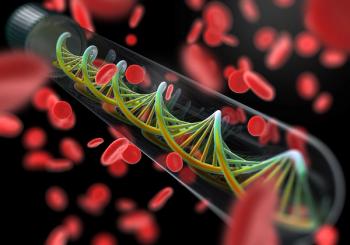
Liquid Biopsies May Help Detect Small Cell Lung Cancer Disease Recurrence
Researchers report on the development of a blood-based assay that could potentially provide an earlier warning of small cell lung cancer relapse by improving diagnostic lead-time compared with CT scan.
By simply evaluating tumor-associated cell-free DNA in patients with small cell lung cancer (SCLC), it may be possible to detect disease progression even before it can be found with imaging. A team of researchers has found that liquid biopsies may potentially provide improved monitoring of disease burden and depth of responses to treatment. In a study
Researchers at Vanderbilt-Ingram Cancer Center and Resolution Bioscience in Bellevue, Washington, have come up with a liquid biopsy blood-based assay that they hope will lead to improved patient outcomes. The current standard of care relies on imaging to identify active disease and track disease progression, but this new assay could change that.
The investigators studied 140 blood samples from 27 patients over a period of 26 months. They isolated ctDNA from each blood sample and detected disease-associated gene mutations in 85% of the samples. In this current investigation, 59% of the patients had advanced disease and the most common mutations occurred in the P53 (70%) and RB1 (52%) genes. The researchers also found alterations in 10 additional genes (PTEN, NOTCH1-4, MYC, MYCL1, PIK3CA, KIT, and BRAF).
“Clinically, the ability to improve diagnostic lead-time in identifying disease relapse, progression, or response compared to CT scans has major treatment implications. If further validated, this technique could allow more timely treatment changes,” said study investigator Wade Iams, MD, a hematology/oncology fellow at McGaw Medical Center of Northwestern University, Chicago, Illinois.
As part of this investigation, the team analyzed blood samples from 25 patients before, during, and after therapy. The researchers found that 9 patients had a marked increase in the number of mutations before there was radiographic evidence of disease progression. Dr. Iams said the investigators were somewhat surprised at the abundance of SCLC tumor-associated cell-free DNA in peripheral blood. He said the allele frequencies were notably higher than a comparison cohort of patients with non-small cell lung cancer.
“On a genomic mechanistic level, validating the approach of evaluating tumor-associated cell-free DNA in patients with SCLC is key because of the difficulty in obtaining good biopsy specimens in patients with SCLC due to necrosis, and the rarity of surgery or rebiopsy at progression,” Dr. Iams told OncoTherapy Network. “Liquid biopsy technology has the ability to shed unprecedented light into dynamic genomic changes in patients with small cell lung cancer.”
Newsletter
Stay up to date on recent advances in the multidisciplinary approach to cancer.
















































































